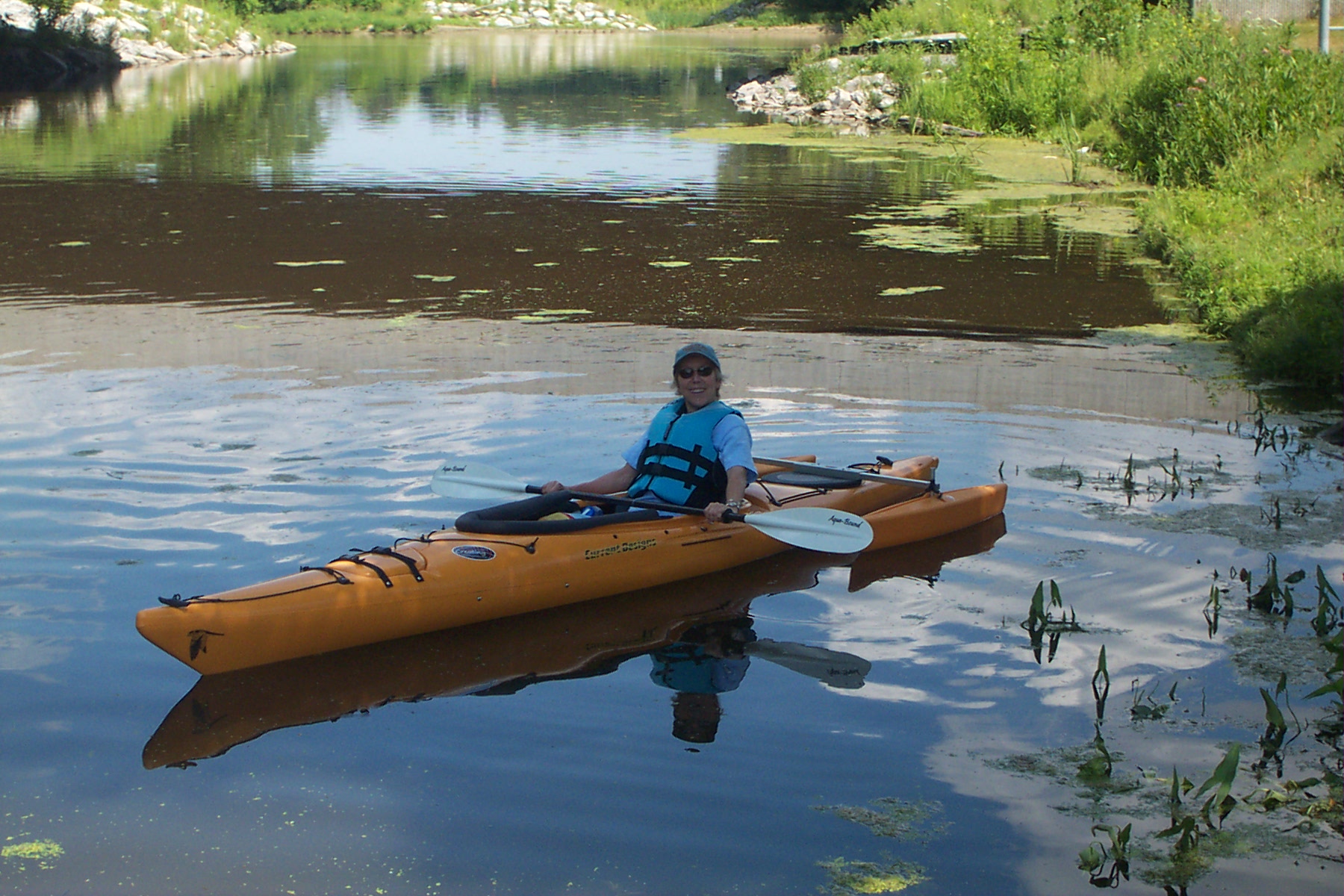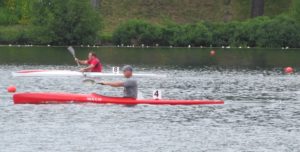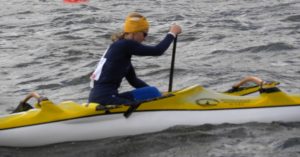
Canoeing
Outrigger Canoeing is safe, fun, and easily adaptable for all!
There is a lot to the sport – more than numbers on the scoreboard, the human side to this is a very powerful experience and I think all the para-athletes can appreciate that they are working to help each other. It brings countries and people together in a marvelous way.Jan Whitaker, President of Paralympic Sport Club, Western New York and Cape Ability
Outrigger Ohana, Inc.
Learn to Canoe
 Gliding over rolling waves, cutting silently through flat water, or racing with a team in a national competition, canoeing has something to offer everybody from first-timer to Paralympic athlete.
Gliding over rolling waves, cutting silently through flat water, or racing with a team in a national competition, canoeing has something to offer everybody from first-timer to Paralympic athlete.
With the right supervision, beginners can start paddling almost immediately. Often no adaptations are necessary for paddling equipment; however, accommodations can be made to make a participant feel comfortable. Individuals with at least one lower limb can learn how to control a kayak with foot-operated rudder controls; individuals with bilateral lower limb amputation/impairment can learn how to use paddle strokes to control direction of a kayak or va’a.
Outrigger canoeing offers competitive and recreational opportunities. An outrigger canoe is a long, thin canoe that is supported by an outrigger or “ama” that provides stability to the boat. It originated from the Polynesian islands and is commonly paddled in Hawaii and the Pacific islands because it can be paddled through ocean waves. To prevent a capsize (huli), canoes used in adaptive programs are rigged either in a double-hull catamaran configuration or the single hulls are rigged with the addition of a safety “ama” attached to the right side of the canoe. Double hulling is common and is a race category even in international sprint races. Cape Ability Outrigger Ohana, a Move United Member Organization, started using the concept of the safety ama on its single hull boats in 1997 after seeing that sailing outrigger canoes use a secondary flying ama to prevent the boat from capsizing when turning. This is not commonly used by able-bodied paddlers.
Programs Near You
Ready to get out on the water and try paracanoeing? Find a local Move United Member Organization that has a canoeing program.
Also check out USA Canoe/Kayak’s master list of Paracanoe Clubs to learn more!
Understanding Paracanoeing
Paracanoeing made it’s Paralympic debut at the 2016 Paralympic Games in Rio de Janiero. USA Canoe/Kayak is the National Governing Body for paracanoe, and the Olympic sports of flatwater sprint and whitewater slalom.

Paralympic competition at this time consists of single person kayaks (K-1) and single person va’a (V-1) with one male and one female paddler in each of the three classification categories (See Classification Sidebar). Races are 200-meter flat water sprint races in lanes nine meters wide.
- The K-1 is modeled on Danish Touring Class Rules and the same length as an International Canoe Federation (ICF) sprint boat; maximum length 520 cm. The K-1 allows steering rudders as well as decking.
- The V-1 consists of a rudderless hull and an ama (outrigger) connected by two ‘iako (spars). Ama can be on either side of the hull if design permits; maximum length 730 cm. Either sit-in or sit-on-top va’a may be used.
Both kayak and va’a racing boats are narrower than recreational boats to gain speed.
“Anybody who has balance issues might find it easier to select the V-1 because they have a stabilizing float on one side,” Whitaker said. “The ama is traditionally rigged on the left, but many of the V-1s are made so the ama can be switched to the right side for a paddler with a unilateral impairment.”
Va’a sprint racers use a bent shaft or angled paddles, which allow the body to be used in a more mechanically efficient manner.
Paracanoe kayak paddlers use the same carbon fiber wing paddles as their Olympic counterparts. The scooped and twisted blade design provides a solid catch and then angles away from the hull throughout the stroke, allowing the paddler to use strong trunk rotation instead of just the arms.
Paracanoeing Adaptations
There are many adaptations available to paddlers. “Seating is of prime importance in getting paddlers positioned correctly and safely,” Whitaker said. “Seats are available for V-1 and K-1 that provide support where needed – buttocks, back, pelvis, and torso.”
A resource Whitaker frequently consults is Kevin Carr, owner of Chosen Valley Creating Ability, and designer of adaptive paddling attachments. “In addition to seat adaptations, Kevin designed a socket attachment for paddlers with above-knee amputations,” she said. “For example, one of our paddlers has only four inches of residual limb, so we created a socket that fits over the side of the boat that she can slip into to enhance boat control and maximize performance. That’s important because when paddling, you are not just rotating from the shoulders but through the whole body and hips as well. So when she rotates her hips forward and her limb is in that socket, she can actually get some forward thrust when she strokes on her dominant side.”
“Paddlers with quadriplegia can hold themselves upright in the boat by using a spray skirt, a device that is worn around the waist using a gasket that seals out water. The “skirt” is the portion that goes from the torso to cover the cockpit to keep out water,” she said.
For upper-limb amputations or muscle weakness there are a variety of grip adaptations to keep the hand on the paddle, as well as allowing for a quick release when needed.
Adaptive Canoeing Equipment Suppliers
Classification
Classes
- Legs, Trunk, Arms (LTA) – Minimum physical disability – loss of three full fingers on one hand; amputation of tarsal/metatarsal of one foot/ loss of strength and range of motion of one limb (10 pts) or two limbs (15 pts); typically amputee, spinal cord injury S1, Cerebral Palsy Class 8.
- Trunk and Arms (TA) – Cannot apply continuous and controlled pressure to the footrest due to significant weakness to the lower limbs; bilateral around knee amputations or significantly weakened lower limbs; typically spinal cord injury, Complete L3 or Incomplete L1, Cerebral Palsy Class 5.
- Arms (A) – No trunk rotation, arms and shoulders only; Complete lesion T-12; Incomplete lesion T-10; Cerebral Palsy Class 4; Likely to have poor sitting balance – probably needs adaptive seat back with lateral supports with the higher lesions.
To Learn More
Paralympic Sport Coaching Guide –USPC Coaching Manual
Cape Ability Outrigger Ohana Presentation –“Paracanoe – A New Paralympic Sport”
National Governing Body –USA Canoe/Kayak
International Governing Body –International Canoe Federation
Extra ResourcesUnited States Canoe Association/Adaptive Paddling

